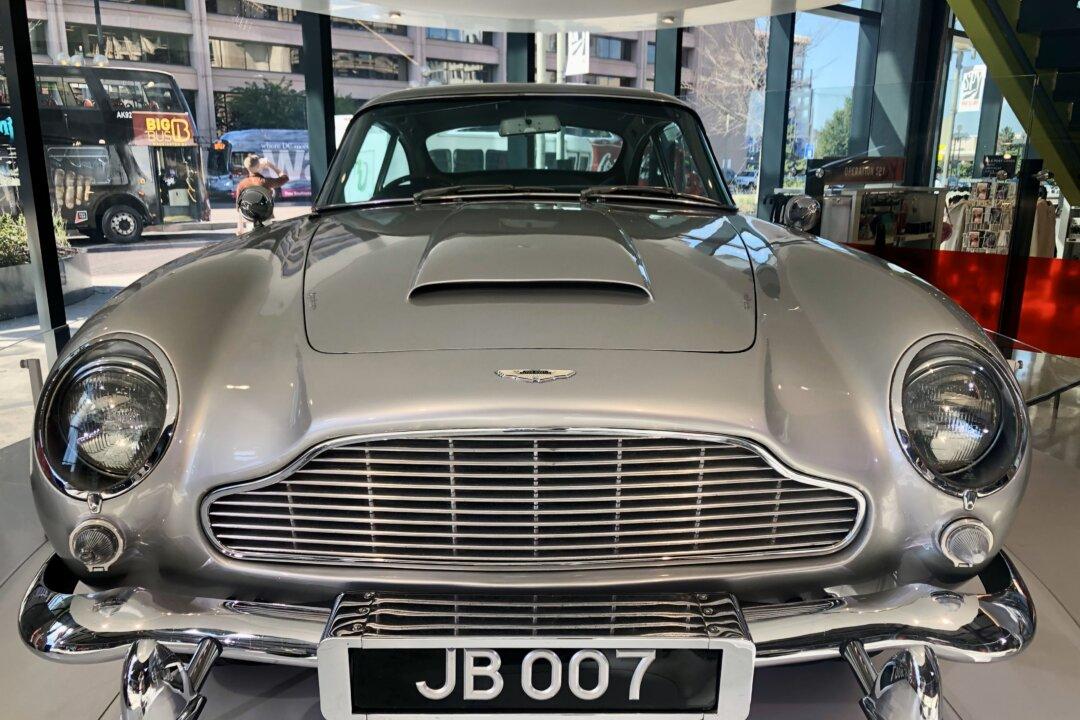WASHINGTON—The International Spy Museum in Washington is one of the most intriguing and engaging museums located in the nation’s capital. Along with its countless homages to international spies across the eras of history and its vast collection of spy craft artifacts, there is one artifact (and one spy) that stands above the rest: James Bond’s 1964 Aston Martin DB5.
Ironically, the car never belonged to an actual spy, nor was it ever used in actual espionage. But who cares about irony? James Bond is synonymous with espionage and the DB5 is synonymous with Bond.






